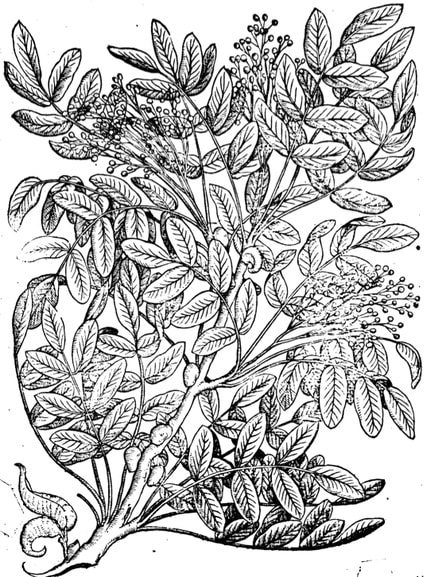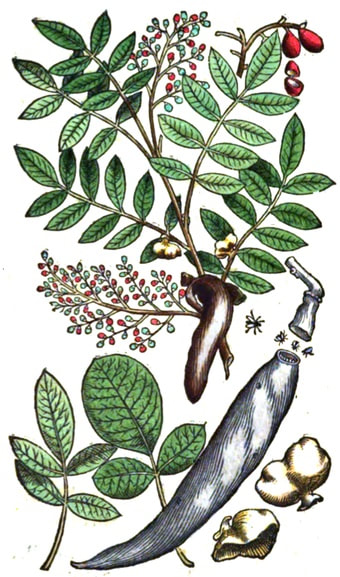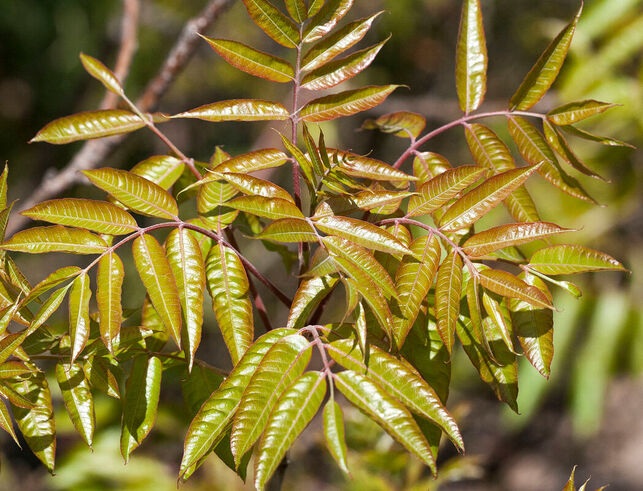Terebinth, Turpentine tree, Chian Turpentine
Turpentine Tree, Cyprian Turpentine, Terebinthina pistacina
Saigiz-i-safid, Sukhur, Habba al-khandra (Unani)
Saigiz-i-safid, Sukhur, Habba al-khandra (Unani)
Botanical name:
Pistacia terebinthus
Apparently various species of Pistachia in the Middle East have been used as a source of resin including P. palaestina, P. cabulica, P. atlantica
See History of Mastic.
Parts used:
Gum-resin
A thick, glutinous, transparent substance with a yellow-green color, an agreeable odor and a pleasant aromatic taste.
Temperature & Taste:
Warm, dry. Pungent, Sweet
Pistacia terebinthus
Apparently various species of Pistachia in the Middle East have been used as a source of resin including P. palaestina, P. cabulica, P. atlantica
See History of Mastic.
Parts used:
Gum-resin
A thick, glutinous, transparent substance with a yellow-green color, an agreeable odor and a pleasant aromatic taste.
Temperature & Taste:
Warm, dry. Pungent, Sweet
Uses:
1. Strengthens the Stomach and Spleen, Benefits Qi:
-digestive weakness
2. Strengthens the Kidneys:
3. Clears Damp, Resolves Masses:
-'it cleanses the Viscera' (Avicenna)
4. Externally:
-A traditional chewing gum, good for the gums and teeth (like Mastic)
Main Combinations:
1. Cough, and to cleanse the Chest:
i. Terebinth Chia with ... available in PRO version
ii. Terebinth Chia, ... available in PRO version
2. Enema to increase Sexual potency, Terebinth Chia with ... available in PRO version
3. Leprosy, Terebinth Chia topically with ... available in PRO version
Cautions:
None noted
Main Preparations used:
None noted
Main Preparations used:
Click the Tabs above for more information on this Medicine
|
This tree affords the Chian, or Cyprus Turpentine. It is a native of the south of Europe and the north of Africa. Itis cultivated in the islands of Scio, (the Chios of the ancients,) and Cyprus, and has been long known in this country as an ornamental plant. There is a fine tree in Chelsea Garden, near the gate, from which the accompanying figure was designed.
The Pistacia Terebinthus is a tree of low stature, seldom attaining the height of thirty or thirty-five feet. The trunk and branches are invested with a dark grey or rugged blackish bark, and bent in all directions. The leaves are pinnate, and consist of three pair of ovate-oblong, entire, smooth leaflets, with an odd one, all of a dark green colour, and somewhat curved backward. They are, in our climate, deciduous, and according to Sir James Ed. Smith appear by Dr. Sibthorpe's drawings, to be so in Greece. The young leaves have a beautiful reddish hue, and are thin, smooth, and shining. The flowers, which appear in May and June, are on different trees, in large, very compound panicles. In the starnineous ones the calyx consists of one leaf, and is divided into five deep equal segments. There is no corolla. The filaments are four or five in number, capillary, very short, and supporting large, brown, erect, oblong quadrangular anthers, of two cells bursting lengthwise. The pistilline flowers are placed on a common peduncle in alternate order, consisting of a calyx in three small squamous segments, and a roundish somewhat triangular germen, supporting three erect styles, with obovate, reflexed, clubbed stigmas. The fruit is a drupe, |
scarcely bigger than a large pea, ovate, smooth, a little compressed, and of a reddish colour. Galls of the same shape are found on the leaves, and very large pod-like ones, are often produced from the young branches, as the figures of the older botanists represent.
Cyprus or Chian turpentine, which is furnished by this tree, is procured by wounding the bark of the trunk in several places, during the month of July, leaving a space of about three inches between the wounds; from these the turpentine exudes and is received on stones, upon which it becomes condensed by the coldness of the night, so as to admit of being scraped off before sunrise. To free it from extraneous substances, it is again liquefied by the sun's heat, and pressed through a strainer, when it is fit for use. The quantity produced is so very inconsiderable, that large trees, sixty years old, are said to yield on an average only two pounds nine ounces and six drachms a piece; but in the eastern part of Cyprus and Chio, the trees afford somewhat more, though still so little as to render its price high, on which account it is much adulterated with the other turpentines. Qualities:—The best Chio turpentine is generally about the consistence of thick honey; is very tenacious, clear, and almost transparent; of a white colour inclining to yellow, and of a fragrant smell; moderately warm to the taste, but free from acrimony and bitterness. (Plantæ Utiliores, Burnett & Burnett, 1850) |





